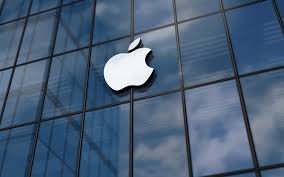iPhone Production Shift: India vs US Economic Impacts
The potential relocation of iPhone assembly operations from India to the United States has sparked a complex debate about economic consequences for both nations and Apple itself. According to trade experts, while India would face employment losses, the financial impact would be far more significant for Apple and American consumers if production shifts stateside.
Ajay Srivastava of the Global Trade Research Initiative reveals that India captures less than 30fromevery30fromevery1,000 iPhone sold in America. Despite this small share, removing Indian production would widen the US trade deficit with India by approximately $7 billion annually. The current arrangement, where India primarily handles final assembly, generates crucial employment opportunities – about 60,000 jobs in India compared to 300,000 in China – though the value addition remains minimal in the global supply chain.
Recent statements from former US President Donald Trump have brought this issue into sharp focus. During his Middle East tour, Trump publicly pressured Apple CEO Tim Cook to move manufacturing from India to the United States, framing it as part of his broader “America First” economic agenda. However, industry analysts question the practicality of such a move given current economic realities.
The financial implications of iPhone production relocation could be staggering for Apple. Labor costs would skyrocket from 290perworkermonthlyinIndiatonearly290perworkermonthlyinIndiatonearly2,900 in the US due to minimum wage requirements. This thirteen-fold increase would raise assembly costs per device from 30to30to390, potentially slashing Apple’s profit margins from 450tojust450tojust60 per iPhone. Such drastic cost increases might force Apple to either accept lower profitability or pass costs to consumers through higher retail prices – both undesirable outcomes for the tech giant.
Beyond direct financial impacts, the proposed iPhone production relocation raises questions about global supply chain dynamics. Currently, various countries contribute specialized components – the US provides chips (80perphone),Taiwanmanufacturesprocessors(80perphone),Taiwanmanufacturesprocessors(150), South Korea produces displays and memory (90),Japansuppliescameratechnology(90),Japansuppliescameratechnology(85), while Germany, Vietnam and Malaysia collectively add $45 worth of components. This intricate international network demonstrates why complete reshoring might prove economically unviable.
India’s position in this ecosystem remains strategically important despite its small value share. The country has become an increasingly vital manufacturing hub as companies seek to diversify beyond China, which still handles 85% of iPhone assembly. Industry observers suggest Trump’s comments may represent negotiation tactics during ongoing US-India trade talks rather than a concrete policy demand, especially considering China’s dominant position in Apple’s supply chain.
The potential iPhone production relocation also carries political dimensions. For India, losing even low-value assembly jobs could slow its ambitions to become a global electronics manufacturing center. For the US, bringing back these jobs would fulfill campaign promises but might not deliver the high-tech employment many American workers desire, as final assembly remains relatively low-skilled work.
Economic analysts emphasize that the current distributed production model benefits all parties – India gains employment, Apple maintains profitability, and US consumers enjoy competitively priced devices. Disrupting this balance through forced iPhone production relocation could create unintended consequences across the global tech economy.
As this debate continues, Apple faces difficult decisions between political pressures and business realities. The company must weigh the symbolic value of US manufacturing against the financial realities of global production networks. With smartphone profit margins already tightening industry-wide, any significant cost increases could impact Apple’s market position and stock valuation.
The coming months may reveal whether political rhetoric translates into actual supply chain changes. For now, the economic calculus suggests maintaining the status quo benefits more stakeholders than radical iPhone production relocation. However, in an era of increasing economic nationalism and supply chain reevaluation, nothing can be taken for granted in global manufacturing strategies.
Go To Main Page

